By Elizabeth Landry
 For patients suffering with a hernia, the pain, discomfort and disfiguration can be all too familiar. A hernia is essentially a hole in the abdominal or pelvic wall through which tissue can protrude, and while hernias are considered common, they can often be complex depending on the situation. However, regardless of complexity or severity, the team at the Hernia Center of Excellence at St. Joseph’s Health provides high quality care to all patients needing surgery due to a hernia.
For patients suffering with a hernia, the pain, discomfort and disfiguration can be all too familiar. A hernia is essentially a hole in the abdominal or pelvic wall through which tissue can protrude, and while hernias are considered common, they can often be complex depending on the situation. However, regardless of complexity or severity, the team at the Hernia Center of Excellence at St. Joseph’s Health provides high quality care to all patients needing surgery due to a hernia.
The team includes five board-certified, fellowship trained general surgeons with decades of experience and expertise providing minimally invasive, laparoscopic and robotic hernia repair: Beata E. Belfield, MD, FACS; James J. Giannone, DO, MS, FACS, FACOS; C. Melinda Stevens, DO; Travis P. Webb, MD, FACS; and Balasubramaniam Sivakumar, MD, FACS.
“The center aims to coordinate the care process among all team members through the Center of Excellence, facilitating the sharing of best practices and driving continuous improvements.
This ensures patients receive the most current, evidence-based techniques and fully integrated care at every level,” explained Dr. Sivakumar (Dr. Kumar), a well-established surgeon who’s been with St. Joseph’s Health for 42 years.
Recent Designation as an SRC Center of Excellence
In the Spring of 2025, St. Joseph’s Health received accreditation from the SRC (Surgical Review Corporation) as a Center of Excellence for hernia care. The SRC is a nonprofit, patient safety organization that completes independent facility inspection and accredits the top healthcare facilities and surgeons worldwide. SRC accreditation is a third party verification that recognizes providers who meet internationally recognized standards of excellence.

“Our team has achieved a high level of collaboration by implementing a streamlined care plan process, ensuring optimal patient care delivery,” stated Dr. Kumar. “We also hold the distinction of having the most extensive experience with robotic surgery over nearly two decades, consistently delivering the highest quality care. Our recent accreditation survey by the SRC highlights our team of dedicated, passionate surgeons and unwavering commitment to patient outcomes, which we believe sets us apart from other organizations.” Amine Hila, MD, Chief Medical Officer of Acute Care at St. Joseph’s Health, explained why the healthcare organization sought this designation, and how it highlights St. Joseph’s Health as the hernia care provider of choice in the region.
“We sought this designation because it’s a program that is rigorous in making sure that we are providing high quality, safe care to our patients, and allows us to demonstrate that not only are we providing that level of excellence, but that we also maintain it,” Dr. Hila explained. “For things like a hernia, usually it’s not an emergency. The majority of the cases are what we call elective cases. So, the patient has a choice, and we want them to choose us as their destination, having the confidence that this is the best choice in our area.”
The SRC Center of Excellence designation adds to the list of similar Center of Excellence accreditations previously attained by St. Joseph’s Health in orthopedics and cardiac care. By verifying the use of standardized, evidence based surgical protocols, the SRC accreditation optimizes the care pathway for quality, efficiency and higher patient satisfaction, as Dr. Hila pointed out.
“To achieve this designation, not only do you have to put a program together and make sure that you’re complying with all of the quality metrics patients are interested in, but you also have to maintain that quality over time. It’s not a one-time effort. You have to continue to monitor the quality of your care, the metrics and the outcomes of your care, and maintain them at a high level to keep that certification,” Dr. Hila said. “That gives patients the peace of mind that this is one of the areas that the hospital, the surgeons, nursing, everybody involved is paying active, persistent, acute attention to.”
Cutting-Edge Technology in Hernia Care
The Hernia Center of Excellence at St. Joseph’s Health includes 16 operating rooms and four surgical robots, which the practitioners use to provide minimally invasive procedures for hernia patients. In fact, the team of surgeons at St. Joseph’s Health has been on the forefront of surgical innovation for years – they were the first team in the Central New York region to use da Vinci robotic surgery in an outpatient setting, leading the way for many more advances to come.
“The robot is not autonomous – it doesn’t do anything on its own. But the ability to see things so clearly and to have the precision with the instruments and to be able to do things that are much simpler – it’s a lot easier to do procedures on the robot versus how we were doing it before the technology was available,” said Dr. Giannone.
For hernia repair specifically, Dr. Belfield, a surgeon at St. Joseph’s Health since 2020, highlighted how the technologically advanced surgical options offered at the center make an important difference in patient outcomes.


“The procedures that we offer at St. Joseph’s are very specialized and advanced,” said Dr. Belfield. “There is not another hospital in Syracuse that has a surgeon, to my knowledge, who does minimally invasive component separation – a buzzword for getting a very big hernia closed. By doing it robotically or through minimally invasive surgery, we can help that patient get through the hospital in many fewer days than if it had been an open procedure.”
Dr. Stevens, who’s been with St. Joseph’s Health for 12 years, described the many benefits of robotic, minimally invasive surgery for patients, and emphasized the transformative effect of hernia repair surgery.
“Whenever it’s appropriate to do robotic surgery, it yields shorter hospitalization, less post operative pain, faster return to your life and more cosmesis, which is important,” she said. “With hernia repair, it’s basically like taking a puzzle and putting it back together with the realization that you’re missing a couple of pieces. You have to figure out how to make it work anyway. In many cases, we’re able to get patients back to living a more normal life in a short period of time when they may have been suffering with pain for years.”
Multidisciplinary Team Providing Personalized Patient Care
Dr. Belfield explained how the view of hernia surgery within the field of general surgery has evolved over recent years, with technological advances revealing the need for providers to be highly specialized in hernia repair.
“Previously, in general surgery, hernias were sort of regarded as a thing that everybody can do. More recently, hernia
 repair has exploded in techniques and isbeing seen more as a subspecialty, rather than something that just anyone can take on,” she explained.
repair has exploded in techniques and isbeing seen more as a subspecialty, rather than something that just anyone can take on,” she explained.
Each member of the team at the Hernia Center of Excellence does ventral and groin hernia repair, with each provider on the team having extra specialization in other kinds of hernia surgery, including upper abdominal surgery and large abdominal wall reconstruction procedures. As Dr. Giannone described it, on their multidisciplinary team, “everyone can do the regular procedures, plus something extra.”
“I think that’s a huge asset of the group because I don’t think a day goes by when we’re not saying to each other, ‘What do you think about this? Can you see this? Can you check this out?’” Dr. Giannone continued. “So, when it comes to really complex hernias that patients might have, there is usually somebody in the group that says, ‘I’ve done that before – no problem, we can take care of that here,’ which is great for patients, since they don’t have to go somewhere else for care.”
Whether a patient’s hernia is considered common or complex, however, a main priority of the group is to ensure each patient receives highly personalized care that’s best for their unique situation. Working with a large team of perioperative nurses, surgical PAs, pharmacists, and nurse managers, the entire group of providers is aligned around providing hernia patients with a personalized experience and clear communication throughout their journey.
“My goal for every patient is to provide a durable hernia repair through an approach that is appropriate for their belly,” Dr. Belfield said. “So, if someone is a candidate for minimally invasive surgery, that is offered to them. And if a different approach is more appropriate for another patient, for example, open surgery, then we offer that to them. Every procedure we do is tailored to the patient in front of us.”
Streamlined Process from Referral to Recovery
At the Hernia Center of Excellence, and within St. Joseph’s Health at large, patient pathways are aimed at ensuring efficient pre operative education, minimally invasive surgery options whenever possible, fast recovery times and high patient satisfaction scores. The pathway begins with a streamlined referral process, which includes easy access to the general surgery department, a quick turnaround time for consults and
surgical scheduling.
“When the primary care doctor refers to our office for any type of hernia, depending on the type of hernia it is, we’ll determine which one of us the patient is going to see. But usually within a week or two, patients can be seen in the office. We try to process referrals as quickly as possible so we can determine if the patient needs surgery or not and get them back to work or back to their regular routines,” explained Dr. Stevens.
 The team of surgeons at the Hernia Center of Excellence values ongoing communication with referring providers and the patients themselves, which helps achieve continuity of care extending through the time when patients return to seeing their primary care physicians.
The team of surgeons at the Hernia Center of Excellence values ongoing communication with referring providers and the patients themselves, which helps achieve continuity of care extending through the time when patients return to seeing their primary care physicians.
 “Ultimately, patients are anxious to get the help they need and get back home, and we want them to have a very good experience here,” said Dr. Belfield. “So, patients can expect a consistent experience in our office with good communication about what they can do to prepare for surgery, what’s going to happen during surgery and how they can recover best from surgery. The goal at our center is to provide the most durable and most appropriate option for each patient who comes through our doors.”
“Ultimately, patients are anxious to get the help they need and get back home, and we want them to have a very good experience here,” said Dr. Belfield. “So, patients can expect a consistent experience in our office with good communication about what they can do to prepare for surgery, what’s going to happen during surgery and how they can recover best from surgery. The goal at our center is to provide the most durable and most appropriate option for each patient who comes through our doors.”
As a trusted leader in patient care since 1869, with a long-standing history of innovation and excellence in surgical care, St. Joseph’s Health continues to be a regional and national leader in exceptional care for patients, including those seeking hernia repair. Now with the SRC Center of Excellence designation, the Hernia Center of Excellence continues to be another reason why St. Joseph’s Health is consistently ranked among the Best Regional Hospitals by U.S. News & World Report and recognized as the #1 hospital in the Syracuse Metro area.
For Dr. Giannone, such excellent care for patients all comes down to the quality of the team.
 “Coming to work here, it’s really apparent from tip to tail that my other partners are tremendous. It’s rare that you get to be a part of a department where there’s not one person who doesn’t go above and beyond,” he said.
“Coming to work here, it’s really apparent from tip to tail that my other partners are tremendous. It’s rare that you get to be a part of a department where there’s not one person who doesn’t go above and beyond,” he said.
To those wondering how to navigate their need for hernia repair, Dr. Stevens’ message is simple: “Patients may or may not need surgery, but they certainly shouldn’t suffer in silence. We’re here to help.”
For referral information to St. Joseph’s Health Hernia Center of Excellence, visit sjhsyr.org/robotics. Direct lines and EMR referral workflows are available. Consultations, co management discussions, and facility tours for referring providers are welcomed.
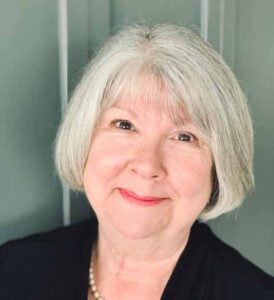 Driving across the western side of the Adirondacks, I made my way to a board strategy session held at The Beeches Manor in Rome, NY—a vibrant place in years past, once known for hosting weddings and proms. I knew it had recently been acquired by Nascentia Health, and I was delighted to see a beautifully restored restaurant and conference center, along with signs of new construction. The site is being transformed into a wellness-focused campus that will eventually offer a variety of assisted living levels and home-like services promoting active aging.
Driving across the western side of the Adirondacks, I made my way to a board strategy session held at The Beeches Manor in Rome, NY—a vibrant place in years past, once known for hosting weddings and proms. I knew it had recently been acquired by Nascentia Health, and I was delighted to see a beautifully restored restaurant and conference center, along with signs of new construction. The site is being transformed into a wellness-focused campus that will eventually offer a variety of assisted living levels and home-like services promoting active aging. When I asked Andrea what guidance she gives clinicians whose patients are aging and asking questions about the future, she emphasized the importance of early planning. Her advice: choose the best housing option early so you can age in place.
When I asked Andrea what guidance she gives clinicians whose patients are aging and asking questions about the future, she emphasized the importance of early planning. Her advice: choose the best housing option early so you can age in place.

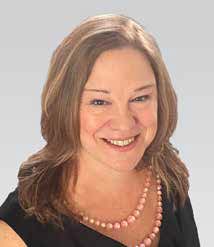 Technology plays a major role in the healthcare sector’s ability to store and handle private patient data. This has improved the efficiency of healthcare delivery, but it has also increased the susceptibility of healthcare providers to cyberattacks. The healthcare industry has witnessed a rise in cyber threats, including ransomware attacks, phishing scams, and data breaches. As a result, medical professionals need to take precautions against online threats to both themselves and their patients. A comprehensive Cyber insurance policy is one way to accomplish this.
Technology plays a major role in the healthcare sector’s ability to store and handle private patient data. This has improved the efficiency of healthcare delivery, but it has also increased the susceptibility of healthcare providers to cyberattacks. The healthcare industry has witnessed a rise in cyber threats, including ransomware attacks, phishing scams, and data breaches. As a result, medical professionals need to take precautions against online threats to both themselves and their patients. A comprehensive Cyber insurance policy is one way to accomplish this.
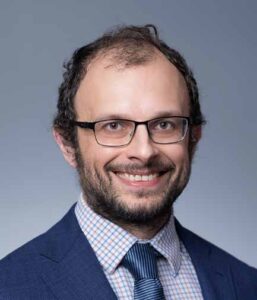
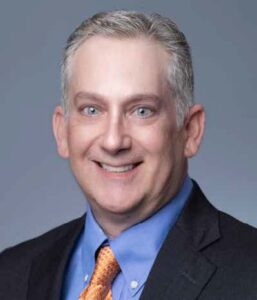 Almost two years ago, New York enacted PHL Article 45 A, which took effect on August 31, 2023. One of the intents behind this law was flagging large business consolidation in the healthcare field, potentially allowing New York’s Department of Health to regulate the increased transaction prices, reduced competition, or narrowed access to healthcare for residents of the state. Please see our previous article formore information on PHL 45-A here. Importantly, New York’s statute includes Managed Services Organizations (“MSOs”), even though they do not provide healthcare services themselves, as part of any healthcarerelated transaction subject to review.
Almost two years ago, New York enacted PHL Article 45 A, which took effect on August 31, 2023. One of the intents behind this law was flagging large business consolidation in the healthcare field, potentially allowing New York’s Department of Health to regulate the increased transaction prices, reduced competition, or narrowed access to healthcare for residents of the state. Please see our previous article formore information on PHL 45-A here. Importantly, New York’s statute includes Managed Services Organizations (“MSOs”), even though they do not provide healthcare services themselves, as part of any healthcarerelated transaction subject to review.
 “I could do it in my pajamas. I didn’t have to drive anywhere,” explains Kelly. She accessed prescribed exercises through her personal portal and performed them with the assistance of video and motion tracking. “It is such a cool technology. You can really see if you’re doing things the right way.”
“I could do it in my pajamas. I didn’t have to drive anywhere,” explains Kelly. She accessed prescribed exercises through her personal portal and performed them with the assistance of video and motion tracking. “It is such a cool technology. You can really see if you’re doing things the right way.”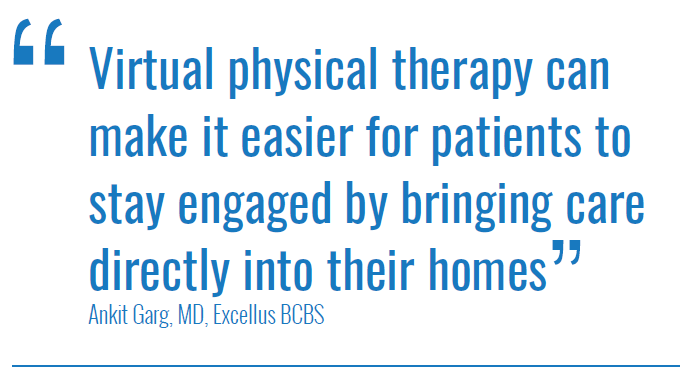 Musculoskeletal treatments are also a top driver of rising health insurance costs.
Musculoskeletal treatments are also a top driver of rising health insurance costs. For patients suffering with a hernia, the pain, discomfort and disfiguration can be all too familiar. A hernia is essentially a hole in the abdominal or pelvic wall through which tissue can protrude, and while hernias are considered common, they can often be complex depending on the situation. However, regardless of complexity or severity, the team at the Hernia Center of Excellence at St. Joseph’s Health provides high quality care to all patients needing surgery due to a hernia.
For patients suffering with a hernia, the pain, discomfort and disfiguration can be all too familiar. A hernia is essentially a hole in the abdominal or pelvic wall through which tissue can protrude, and while hernias are considered common, they can often be complex depending on the situation. However, regardless of complexity or severity, the team at the Hernia Center of Excellence at St. Joseph’s Health provides high quality care to all patients needing surgery due to a hernia.


 repair has exploded in techniques and isbeing seen more as a subspecialty, rather than something that just anyone can take on,” she explained.
repair has exploded in techniques and isbeing seen more as a subspecialty, rather than something that just anyone can take on,” she explained. The team of surgeons at the Hernia Center of Excellence values ongoing communication with referring providers and the patients themselves, which helps achieve continuity of care extending through the time when patients return to seeing their primary care physicians.
The team of surgeons at the Hernia Center of Excellence values ongoing communication with referring providers and the patients themselves, which helps achieve continuity of care extending through the time when patients return to seeing their primary care physicians. “Ultimately, patients are anxious to get the help they need and get back home, and we want them to have a very good experience here,” said Dr. Belfield. “So, patients can expect a consistent experience in our office with good communication about what they can do to prepare for surgery, what’s going to happen during surgery and how they can recover best from surgery. The goal at our center is to provide the most durable and most appropriate option for each patient who comes through our doors.”
“Ultimately, patients are anxious to get the help they need and get back home, and we want them to have a very good experience here,” said Dr. Belfield. “So, patients can expect a consistent experience in our office with good communication about what they can do to prepare for surgery, what’s going to happen during surgery and how they can recover best from surgery. The goal at our center is to provide the most durable and most appropriate option for each patient who comes through our doors.” “Coming to work here, it’s really apparent from tip to tail that my other partners are tremendous. It’s rare that you get to be a part of a department where there’s not one person who doesn’t go above and beyond,” he said.
“Coming to work here, it’s really apparent from tip to tail that my other partners are tremendous. It’s rare that you get to be a part of a department where there’s not one person who doesn’t go above and beyond,” he said.



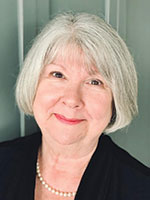 Recent conversations with families seeking mental health resources have highlighted the severe challenges in accessing psychiatric care in our community. What began as routine inquiries have exposed a healthcare system stretched beyond capacity, with primary care physicians increasingly unable to connect patients with psychiatric specialists. The backlog, initially attributed to COVID-19 disruptions and workforce shortages, has reached critical levels that demand innovative solutions.
Recent conversations with families seeking mental health resources have highlighted the severe challenges in accessing psychiatric care in our community. What began as routine inquiries have exposed a healthcare system stretched beyond capacity, with primary care physicians increasingly unable to connect patients with psychiatric specialists. The backlog, initially attributed to COVID-19 disruptions and workforce shortages, has reached critical levels that demand innovative solutions.
 When you climb the porch stairs to the front door of Judith’s home, you’re greeted by a woman with a radiant smile, and immediately sense a palpable warmth. She came to the inner city of Rochester to visit a cousin. While she never imagined she would stay, that’s exactly what she’s done. Her cousin eventually moved away, and Judith found herself alone—her daughter, her closest relative, lives more than five hours away.
When you climb the porch stairs to the front door of Judith’s home, you’re greeted by a woman with a radiant smile, and immediately sense a palpable warmth. She came to the inner city of Rochester to visit a cousin. While she never imagined she would stay, that’s exactly what she’s done. Her cousin eventually moved away, and Judith found herself alone—her daughter, her closest relative, lives more than five hours away.
 Around the holidays, when the world can feel lonely for many, Community Connections shows up with food baskets and kindness. In 2024, they brought Thanksgiving meals to 375 families who might have otherwise gone without.
Around the holidays, when the world can feel lonely for many, Community Connections shows up with food baskets and kindness. In 2024, they brought Thanksgiving meals to 375 families who might have otherwise gone without.








 Providing Cutting-Edge, High-Quality Care
Providing Cutting-Edge, High-Quality Care